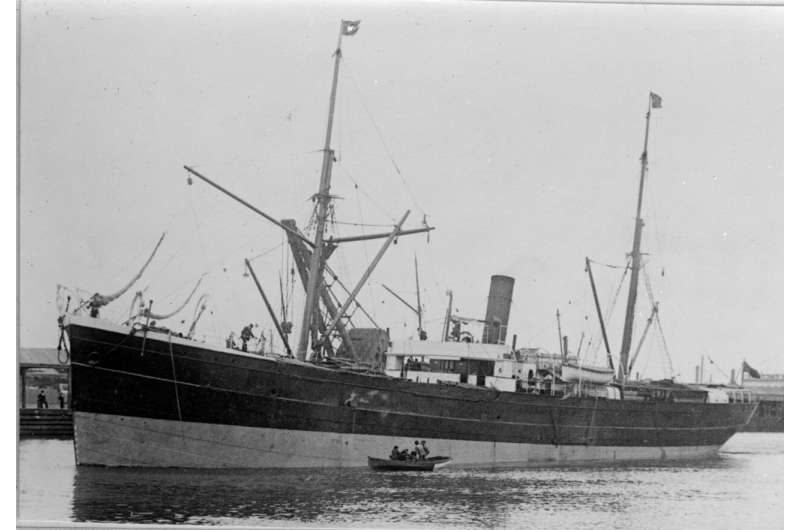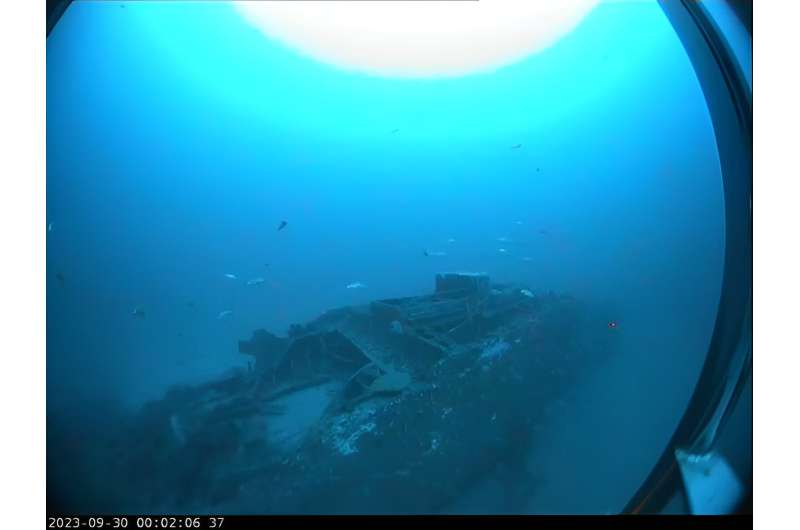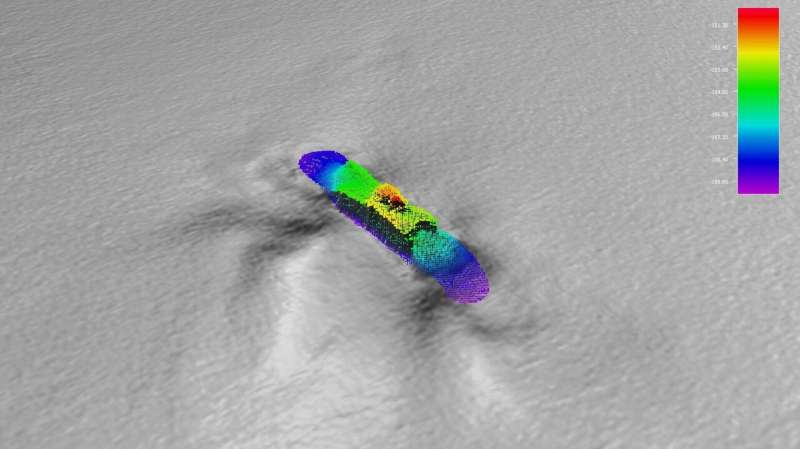This article has been reviewed according to Science X's editorial process and policies. Editors have highlighted the following attributes while ensuring the content's credibility:
fact-checked
trusted source
proofread
Solving the 120-year maritime mystery of the SS Nemesis

A CSIRO team aboard research vessel (RV) Investigator has helped Heritage NSW solve a 120-year mystery with the discovery of the SS Nemesis, a 73-meter iron-hulled steamship that was lost at sea in 1904.
SS Nemesis had been on a voyage from Newcastle to Melbourne carrying coal when it disappeared in a storm off the NSW coast with the tragic loss of all 32 lives on board.
Its location was unknown until marine survey company Subsea Professional Marine Services discovered and reported the uncharted wreck to Heritage NSW in May 2022.
Subsea located the wreck during an underwater survey off Wollongong, NSW, and undertook an initial inspection of the site using a remotely operated vehicle.
CSIRO, Australia's national science agency, was petitioned by Heritage NSW to investigate the wreck to gather further data to aid in its identification.
RV Investigator was able to conduct a detailed seafloor mapping and camera investigation of the wreck while on a transit voyage from Hobart to Sydney in September 2023.
The CSIRO team used the vessel's advanced multibeam echosounders to first map the wreck site and surrounding seafloor in high resolution. They then conducted a systematic visual inspection of the entire wreck using a specialized underwater drop camera system.
CSIRO voyage manager Jason Fazey said the RV Investigator was in the right place at the right time to assist Heritage NSW and conduct the survey.

"Our voyage track took us right past the wreck, and we were extremely lucky with the conditions for the survey, with our team onboard doing a superb job in capturing incredible imagery of the wreck," Mr. Fazey said.
"We surveyed the entire length of the wreck with our drop camera, revealing a lot of detail of the ship's structures, including some of the internal spaces."
Phil Vandenbossche, a CSIRO hydrographic surveyor on board the voyage, said the seafloor mapping by RV Investigator shows the wreck is lying in 160 meters of water and is approximately 28 kilometers off the coast of Wollongong, NSW.
"The wreck is located towards the edge of the continental shelf and is sitting upright on the seafloor but is showing significant damage and deterioration at both the bow and stern," Mr. Vandenbossche said.
"Our visual inspection of the wreck using the drop camera showed some key structures were still intact and identifiable, including two of the ship's anchors lying on the seafloor."
The bathymetry and camera survey data from RV Investigator, along with the previous imagery collected by Subsea, allowed Heritage NSW's maritime archaeology experts to identify the wreck as the SS Nemesis.
Senior Maritime Archaeologist with Heritage NSW, Dr. Brad Duncan, said that the SS Nemesis was originally a passenger vessel but was converted and operating as a coal carrier when it disappeared.

"On its final voyage in July 1904, SS Nemesis left Newcastle for Melbourne with its hold full of coal and coke," Dr. Duncan said.
"However, shortly after departure, the vessel ran into a southerly gale and was subsequently lost at sea off the NSW coast with the tragic loss of 32 lives on board."
Dr. Duncan said that, like many wreck discoveries, locating the SS Nemesis was the result of a highly collaborative effort between research and heritage agencies and the maritime community.
"The wreck is one of many thousands of shipwrecks that lie along the Australian coastline, with many still to be found," Dr. Duncan said.
"This discovery and confirmation of the wreck's identity not only provides significant archaeological information about the ship and wrecking event but, more importantly, may offer some solace to the families and friends of those who perished onboard as it provides a location at which they can mourn their loved ones."
The video imagery collected by RV Investigator will now be "stitched together" to create a 3D photogrammetric model of the wreck to allow it to be investigated in further detail.
Mr. Fazey said CSIRO is honored to be able to assist the maritime heritage community in identifying and protecting this significant shipwreck.
"We hope this helps bring some closure for another of our nation's maritime mysteries," Mr. Fazey said.
The wreck of the SS Nemesis is protected as a historic shipwreck under the Underwater Cultural Heritage Act 2018.
Provided by CSIRO




















